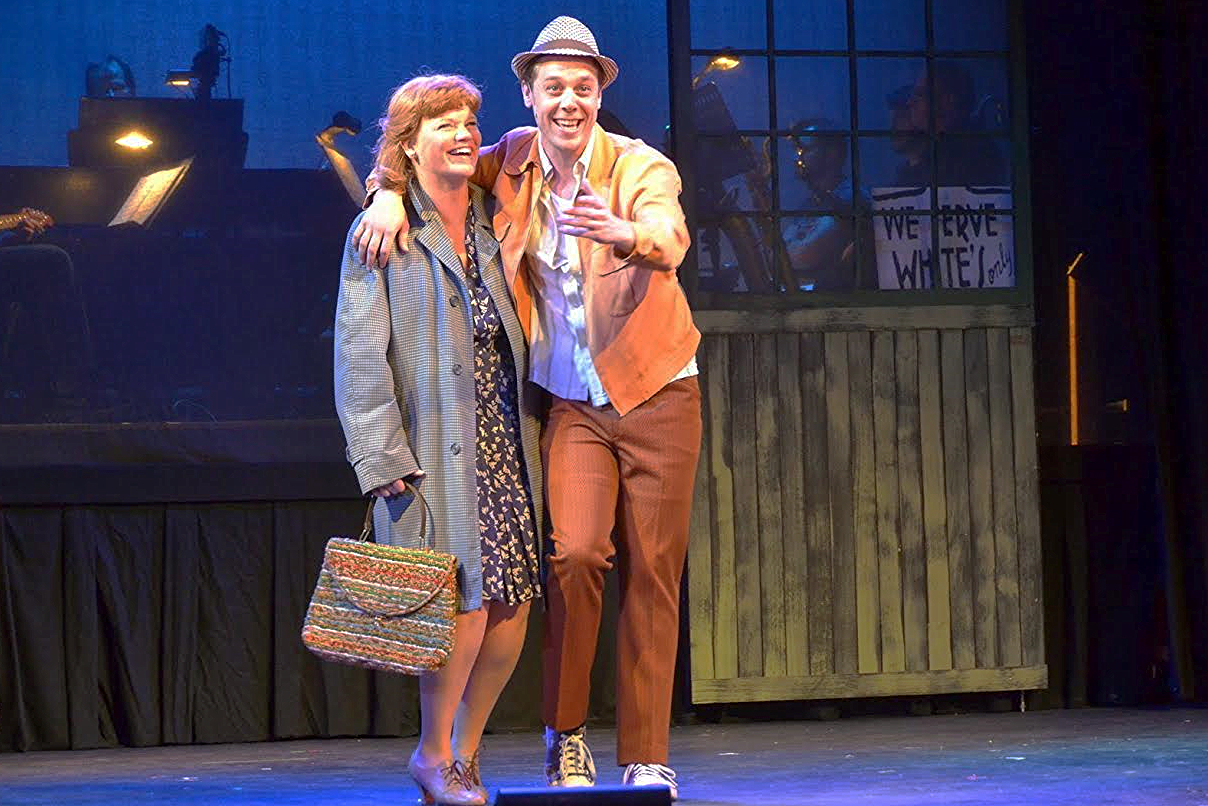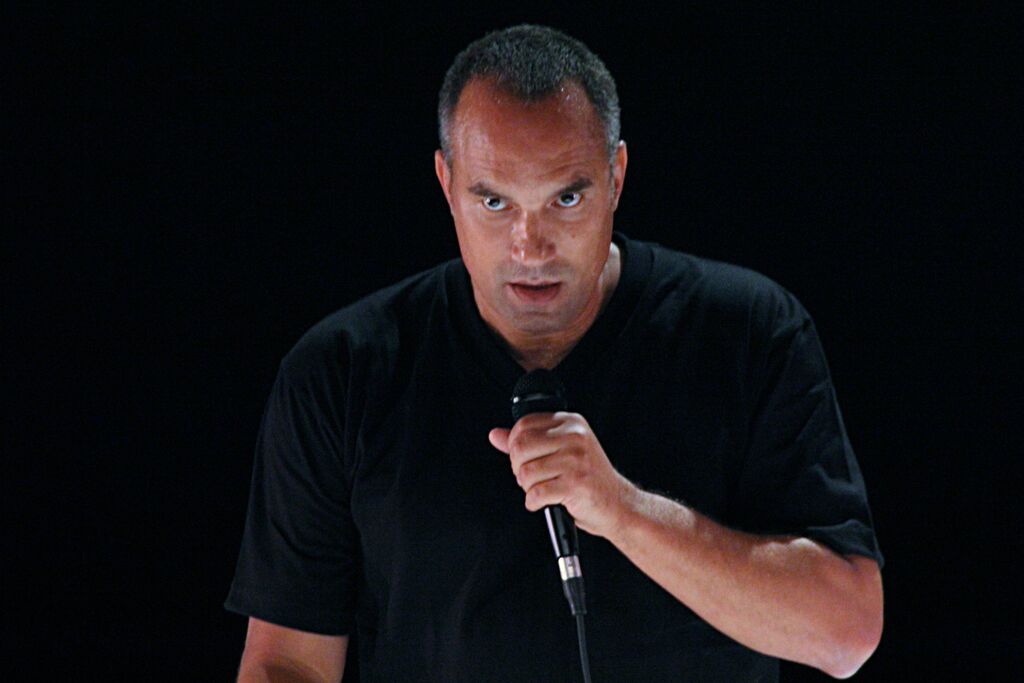A new play based on personal, family experience comes to Yale Cabaret.
It began as “Mom and Son.” Now it’s called MoonSong. Sean Patrick Higgins, a third-year actor in the Yale School of Drama, has been contemplating how to bring his story to the stage at least since he encountered Jackson Moran’s one-man show, All This Noise, at the Yale Cabaret while visiting as a prospective student. Moran’s play tackled the problem of how a family deals with mental illness. Higgins, whose mother suffers from multiple sclerosis, responded to the theme of Moran’s play, but he’s taking a different approach. Rather than a play focusing on “Son” or himself, Higgins’ play focuses on his mother. And his mother will be played by Higgins’ sister, Mary Higgins, a professional actress. Dan, the Higgins’ youngest sibling, is also involved as the show’s choreographer. That makes for a family dynamic that is not only unusual but potentially very rich and significant in this drama based on their shared family experience.
The presence of a choreographer should indicate the play isn’t going to be comprised of monologues and dialogues. Higgins’ mother, Sharon E. Wagner-Higgins, who was diagnosed with MS in her late twenties, is a singer, and Higgins and his co-director Libby Peterson, a third-year theater manager, use dance in MoonSong to suggest “the freedom of expression of the mind” and spirit, those aspects of ourselves we like to think are not “shackled to the body.” “There is a physical world of limitations,” Peterson says, but the play should create “a space to show the free spirit of women, their independence.”
Higgins and Peterson want the play to be not only a dramatic presentation of the kinds of trials that can occur when children go from being taken care of by parents to being caretakers of ailing or aging parents, but also to “show the role of family at the heart” of that experience. The role reversal is key to Higgins’ conception of the play, and the title MoonSong—which refers to a lullaby the mother sings to her son as a child—derives from its similarity to the words “Mom,” “Son,” as well as to the role of the song as a bond through the years. “And the mother identifies with the moon,” Higgins says, particularly as her condition, in its flareups and remissions, puts both mother and son in mind of lunar cycles.
Getting his sister to play his mother doesn’t seem to have caused Sean Higgins any extra anxiety, though one could imagine there might be considerable tension there. Mary, Higgins says, bears a strong resemblance to their mother, but, as an actor her role is not simply to impersonate their mother but to find a way to illuminate this woman’s importance in the play and to do justice to her struggles, as with any well-written, naturalistic character. It’s not about “mom” so much as “mothers.”
Though he considered trying to take on the triple threat of writing, acting, and directing, Higgins will not be playing himself. Jonathan Higginbotham, a second-year actor in the program recently seen in the Cab’s season-opening show We Are All Here, will play “Son.” Higgins is full of a praise for how his chief actor is coming into his own. And he also has praise for Peterson, one of his closest friends in the program, who took on the task of co-directing so that there would always be a presence in the room not so close to the family and its experience. Peterson shares with Higgins the fact of having to face, early in their lives, long-term illness in the family, and she has also spent time with Higgins’ family members before getting involved in MoonSong. Asked about their working relationship, both say they are able “to challenge each other and call each other on stuff,” forcing themselves to “keep it honest.”
“There’s the potential for the play to become very sentimental,” Higgins admits, particularly as the family has had to deal with the recent loss of their stepfather, and speaks of the effort to maintain a focus that “keeps the play from wallowing” in personal problems. Part of that is achieved, Peterson says, by “the triumph of the ordinary.” The play shows how, for parents, the successes of their children as they grow can feel like a major accomplishment; when the tables are turned and children, as adults, must tend the aged or infirm, the importance of routine, and all the shared experiences of the mundane, helps them get through.
For Higgins, theater is “a conscious dream” that brings people together to share an experience that can affect and change them. Peterson and Higgins both speak of how our art and entertainment tend to shy away from the elderly and the ill. They want MoonSong to raise awareness of the issues of long-term illness in our society, in the way that so many shows YSDers undertake focus attention on persons facing challenges of discrimination or marginalization. For Higgins, the play, if it were to stretch beyond the short running time of a Cabaret show, would take on issues with health care and Medicare in this country and get into the political issues that make care-giving not only a personal, familial theme but a societal concern.
Peterson says that one of the strengths of the Cab for the show’s first run is that the small playing space is great for the intimacy such a show demands while also making viewers “walk in our shoes,” even if that makes them uncomfortable. And both Higgins and Peterson stress the “joy and play amongst the sorrow.” An illness like multiple sclerosis should be seen as a fact of life and, like all facts of life, should become “a building block of the play,” able to be translated into theater, and an occasion for further reflection on what it means to live and to be human.
MoonSong runs at the Yale Cabaret this coming weekend, October 15th-17th. Shows are at 8 p.m. Thursday, Friday, and Saturday, and at 11 p.m. on Friday and Saturday. For tickets and info about the Yale Cabaret, go here.













































